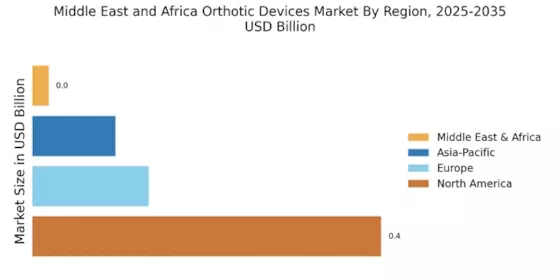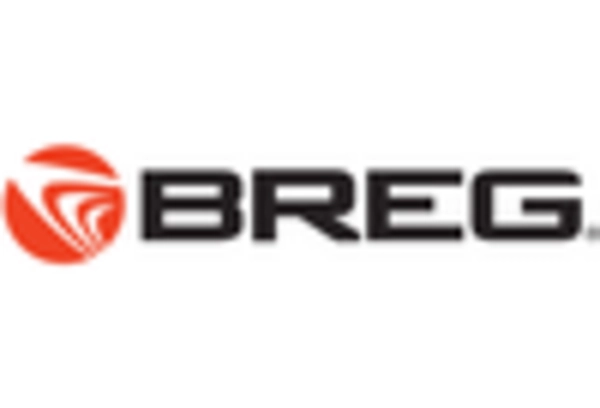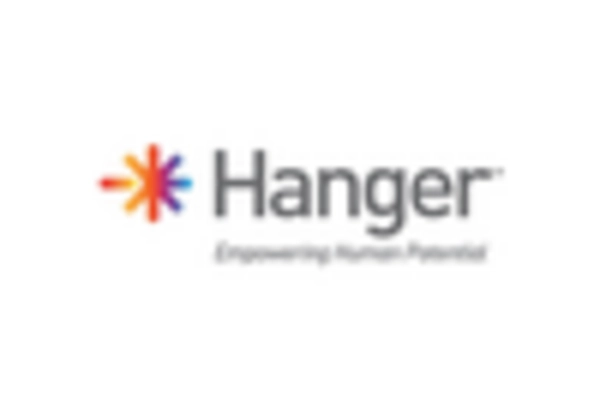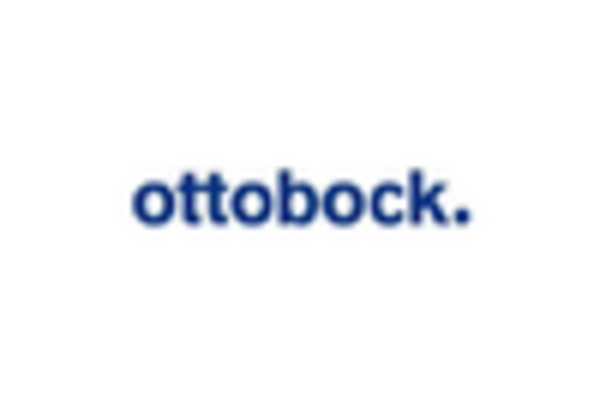Growing Geriatric Population
The demographic shift towards an aging population in the Middle East and Africa is a significant driver for the Orthotic Devices Market. As individuals age, they are more susceptible to conditions that necessitate the use of orthotic devices, such as arthritis and mobility impairments. Projections indicate that by 2030, the elderly population in the region will increase substantially, leading to a higher demand for supportive devices. This trend is prompting healthcare systems to adapt and invest in orthotic solutions that cater to the needs of older adults. Consequently, the Middle East and Africa Orthotic Devices Market is expected to grow in response to this demographic change, focusing on products that enhance the quality of life for the elderly.
Increased Healthcare Expenditure
Rising healthcare expenditure across the Middle East and Africa is fostering growth in the Orthotic Devices Market. Governments and private sectors are investing more in healthcare infrastructure, which includes the provision of advanced medical devices. This increase in funding is likely to enhance access to orthotic devices, making them more available to patients in need. Reports indicate that healthcare spending in the region has seen a steady increase, with some countries allocating significant portions of their budgets to orthopedic care. As a result, the market is poised for expansion, driven by improved access to innovative orthotic solutions that can aid in rehabilitation and recovery.
Advancements in Material Science and Design
Innovations in material science and design are transforming the Middle East and Africa Orthotic Devices Market. The introduction of lightweight, durable materials such as carbon fiber and advanced polymers is enhancing the functionality and comfort of orthotic devices. These advancements not only improve the user experience but also expand the range of applications for orthotic devices, from sports to post-surgical recovery. Furthermore, the integration of 3D printing technology allows for customized solutions tailored to individual patient needs, which is becoming increasingly popular in the region. As a result, the market is likely to witness a surge in demand for innovative orthotic products that offer both performance and personalization.
Increasing Prevalence of Musculoskeletal Disorders
The rising incidence of musculoskeletal disorders in the Middle East and Africa is a pivotal driver for the Orthotic Devices Market. Conditions such as arthritis, osteoporosis, and sports injuries are becoming more prevalent, leading to a growing demand for orthotic solutions. According to recent health statistics, musculoskeletal disorders affect a significant portion of the population, with estimates suggesting that nearly 30% of adults in the region experience some form of these conditions. This trend is likely to propel the market forward as healthcare providers increasingly recommend orthotic devices for pain management and rehabilitation. The Middle East and Africa Orthotic Devices Market is thus positioned to expand, catering to the needs of a population that is increasingly seeking effective solutions for mobility and pain relief.
Rising Awareness and Education on Orthotic Solutions
There is a growing awareness and education regarding the benefits of orthotic solutions in the Middle East and Africa, which is positively influencing the Orthotic Devices Market. Healthcare professionals are increasingly educating patients about the advantages of using orthotic devices for various conditions, including injury prevention and rehabilitation. This heightened awareness is leading to a greater acceptance of orthotic solutions among the general population. Additionally, community outreach programs and health campaigns are further promoting the importance of orthopedic health. As awareness continues to rise, the demand for orthotic devices is expected to increase, driving growth in the Middle East and Africa Orthotic Devices Market.


















Leave a Comment